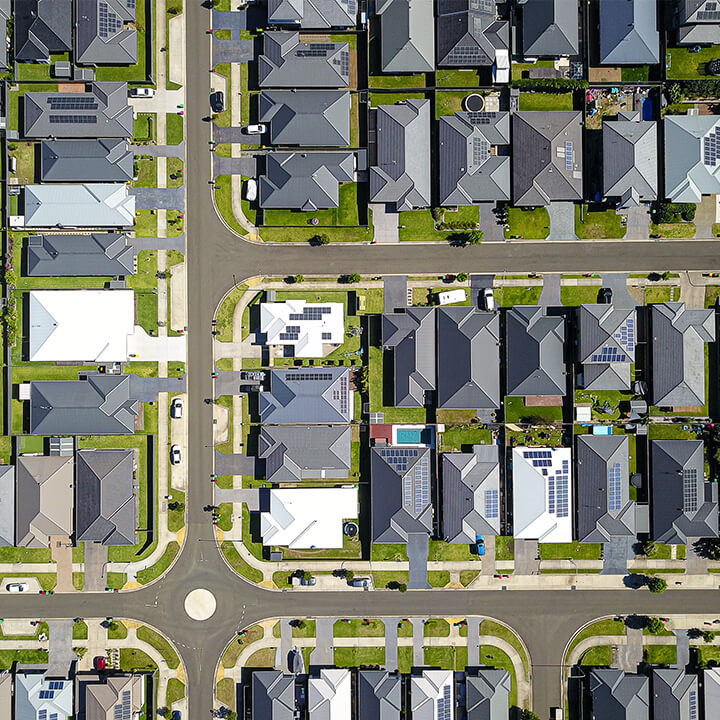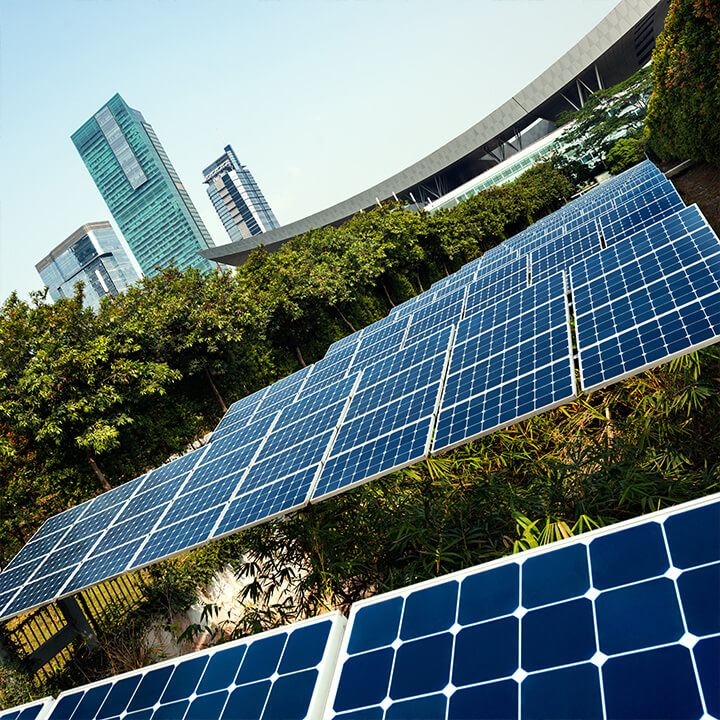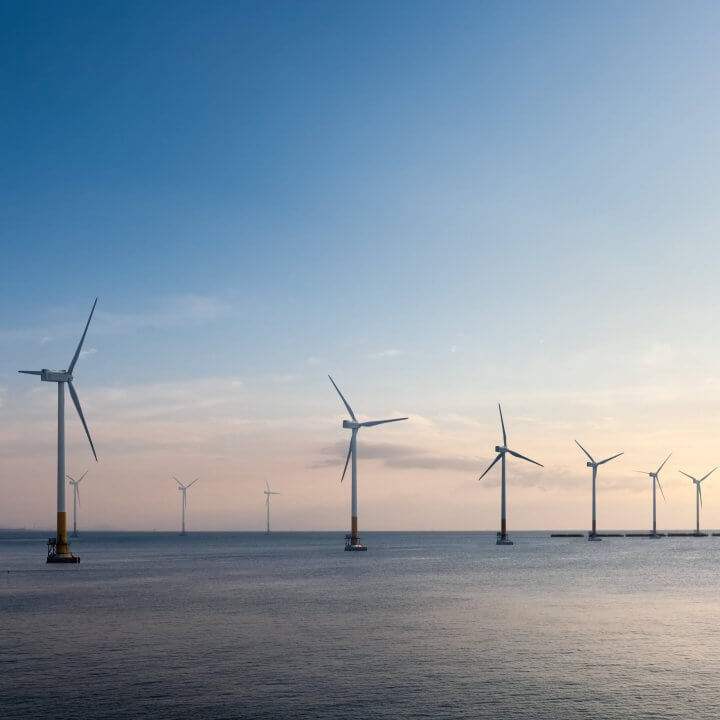Heat network zoning: What businesses need to know
21st September 2023
The Topline
“Decarbonising homes, public buildings and commercial buildings is central to achieving the UK’s net zero commitments and a huge challenge facing both government and industry. Heat network zoning offers real opportunities for landowners, occupiers, developers and contractors to help deliver greener cities and decarbonise the built environment.”
– Ben Sheppard, Partner, Infrastructure and Energy

Infrastructure & Energy and Planning & Environment specialists Ben Sheppard and Chris Slater explain heat network zoning, and how current proposals could help businesses with the transition to Net Zero.

Decarbonising heat and Net Zero
The UK’s Net Zero target is to reduce national greenhouse gas (GHG) emissions by 100% from 1990 levels by 2050. Although strides have been made, the UK is falling behind. For example, National Statistics show that UK GHG emissions had been reduced by 45.2% from 1990 levels in 2019, and by 48.7% 2022. To get on track, reductions need to reach 68% by 2030 – just 7 years from now.
In 2022, energy used for heating and hot water in residential properties in the UK accounted for around 17% of national GHG emissions. It’s generally accepted that Net Zero targets won’t be reached without decarbonising the supply of heat to domestic and non-domestic buildings.
Decarbonising heat: Challenges
There are several options for decarbonising the UK’s homes and buildings. These include electrification, heat pumps, and low or zero carbon alternatives to natural gas, such as hydrogen or biomethane. All of these currently entail significant challenges. Electricity is usually more expensive than natural gas, meaning increased costs for households. Installation of heat pumps and related energy efficiency measures requires significant upfront investment and can be disruptive. The infrastructure necessary for hydrogen is a number of years away. There is not currently sufficient biomethane production and supply capacity for it to represent a realistic option on any meaningful scale.
A viable alternative? Heat networks and heat network zoning
In some places district heat networks present a viable solution. A district heat network is a system of insulated pipes that provides heat to several buildings from a central source of low carbon heat generation. Heat networks are widely used in other parts of Europe. According to 2020 figures submitted to UK parliament by the Embassy of Denmark, more than 65% of Danish households are connected to a heat network. Capable of unlocking otherwise inaccessible larger scale renewable and recovered heat sources, such as energy from waste facilities, waste heat from industry and heat from rivers and mines, heat networks work particularly well in urban and/or industrial areas.
Heat networks can play a crucial part to help the UK achieve its Net Zero targets. The Climate Change Committee has estimated that around 18% of UK heat – including domestic, commercial, industrial and public – could come from heat networks by 2050 (up from around 2% currently).
In the 2020 Energy White Paper, the government committed to designating new heat network zones in England by no later than 2025. Following a consultation on heat network zoning proposals, the government is advancing the Energy Bill to support the development of heat network zones, and has published its policy on its proposed heat network zoning framework.
The government proposes to:
- Develop a nationwide methodology for identifying and designating areas as heat network zones
- Establish a new zoning coordinator role, which would be fulfilled by local government, with responsibility for designating areas as heat network zones and enforcing requirements within them
- Consider establishing a central authority to oversee zoning at a national level and support local zoning coordinators
- Require heat networks developed in zones to meet a low carbon requirement
- Require certain buildings and heat sources to connect to a heat network zone within a specific timeframe.
Heat network zoning: Interaction with planning
It’s proposed that, when the national modelling process has identified a potential heat network zone in a town or city, the relevant zoning coordinator will refine the zone boundaries and consider local factors.
The government is exploring the potential to provide standardised routes for the procurement of zones, enabling each zone coordinator to quickly access technical, legal, and commercial guidance and a range of standard contracts.
The heat network zoning framework will be a separate regulatory regime to the planning system, but it will inevitably interact with the wider planning system. Planning for heat networks will need to take into account the proposals in development plans, and potentially some large-scale planning decisions. Similarly, it’s likely that local authorities will take into account existing and potential heat network zones when it comes to the preparation of development plans and the consideration of planning proposals.
What does heat network zoning mean for businesses?
Heat network zoning is intended to support the development of district heating networks. For those businesses owning, occupying or developing properties in heat network zones, heat networks offer significant financial and sustainability benefits associated with connection to a green, lower cost source of heat. Heat networks also represent an opportunity for energy infrastructure and construction companies involved in the development and construction of the infrastructure. When it comes to property development, planning timescales and project scheduling and delivery could be helped or hindered, depending on how heat network zoning and planning considerations ultimately interact in practice.
Heat network zoning: Next steps
The government is currently working with 28 cities and towns to develop a methodology for identifying and designating heat network zones. The methodology will consider data such as location and building type, size, and existing energy use, amongst other factors. The government hopes to identify zones, and then start construction, as soon as possible.
It remains to be seen exactly how responsibility for heat network zoning will be designated between central and local government. For example, there is a public sector decarbonisation scheme which provides grants for public sector bodies to fund heat decarbonisation and energy efficiency measures, but the recently published policy states that successful delivery of heat network zoning policy will be dependent on local government having the right resources to deliver their responsibilities effectively, and that how those costs will be met is yet to be considered. The government has said that, where there are any interactions between heat network zoning and local plans, relevant government departments will work together to ensure a joined-up approach, but details of what that means in practice are awaited.
Further, more detailed consultation on heat network zoning is to be undertaken before the end of 2023. Walker Morris will monitor and report on developments.
How we can help
Walker Morris is a multi-disciplinary commercial law firm, with specialist lawyers experienced in infrastructure and energy; environmental issues and the sustainability agenda; commercial contracts; corporate- and climate- reporting; as well as construction and engineering, real estate and planning.
Walker Morris’ specialist Infrastructure & Energy and Planning & Environment lawyers help businesses to successfully navigate, and to capitalise upon, the various changes on the horizon associated with decarbonising buildings and the impact of heat network zoning. We work seamlessly across the relevant legal disciplines in an advisory capacity, keeping clients fully informed as to legal/regulatory changes and requirements. We undertake contract- and policy/procedure- reviews to highlight where new terms or approaches might be preferable or needed. We help with contractual and/or regulatory negotiations and with drafting new contractual arrangements or variations. In addition, we can support development clients from cradle to grave, offering strategic, risk management, practical and transactional advice in relation to all aspects of infrastructure projects and real estate/planning transactions.
For tailored advice in connection with any sustainability/Environment issues, development projects, or any planning proposals or concerns, please contact Ben Sheppard, Chris Slater, or any member of the Infrastructure & Energy or Planning & Environment teams.











